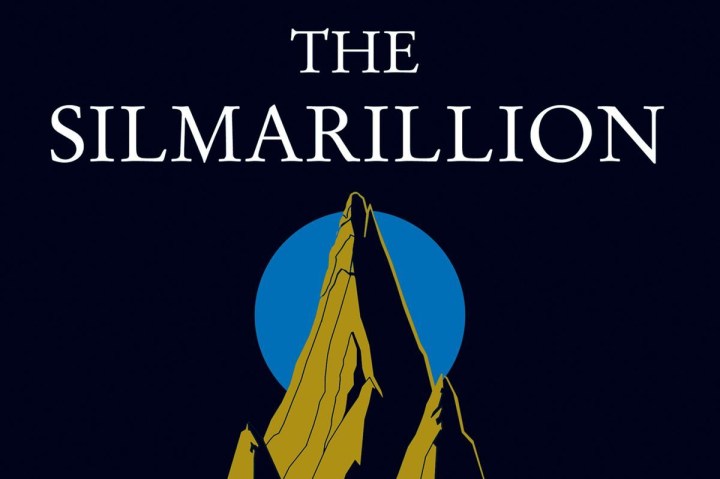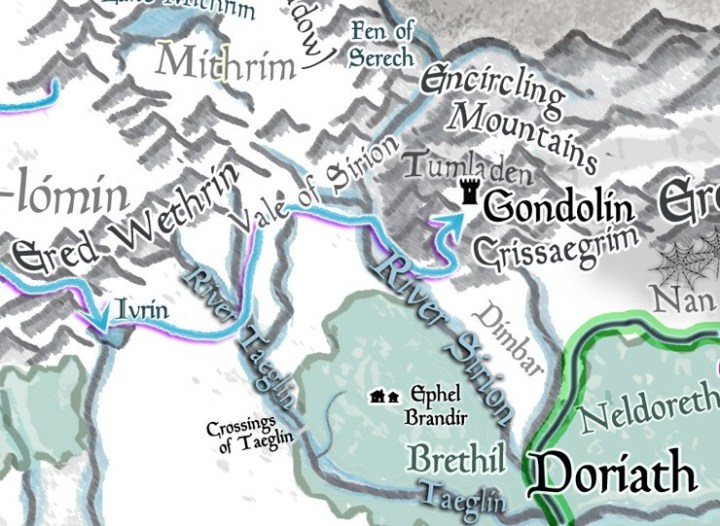
Before reading The Silmarillion, there are some questions that you should probably ask yourself:
- Do you know the basic stories of Gil-Galad and Beren One-Hand?
- Do you recognize names like Barahir, Grond and Fëanor and want to know more about them?
- Have you figured out, through context alone, what (fictional) words like dagor and ithil mean?
If you answered “yes” to all of those questions, then you still need to ask yourself one more thing: Would you be excited to read a 350-page history textbook about an imaginary world, a vast and sprawling text that is rendered almost incomprehensible without having a map on hand for frequent reference and which concerns itself primarily with the geographic and linguistic migrations of the imagined populace of its fictional universe?

Only those who got through that final question with an emphatic “Yes!” should consider putting in the time required to read The Silmarillion, a collection of fictional histories that was posthumously published in 1977, four years after J.R.R. Tolkien’s death.
My love of Tolkien is deep and abiding but getting through The Silmarillion is a slog, a reality that even Tolkien himself couldn’t escape, as noted in the foreword to The Lord of the Rings:
“[The Lord of the Rings] was begun soon after The Hobbit was written and before its publication in 1937; but I did not go on with this sequel, for I wished first to complete and set in order the mythology and legends of the Elder Days … and I had little hope that other people would be interested in this work … When those whose advice and opinion I sought corrected little hope to no hope, I went back to the sequel.”
Because of its dry, historical bent, there are very few opportunities to get caught up in a story or narrative throughout The Silmarillion. The primary reward for churning through Middle-earth’s imagined history, then, is the added layer of depth and appreciation that these histories apply to Tolkien’s other works, namely The Lord of the Rings and The Hobbit. Some of that appreciation is tied up in the specifics of the text—Gandalf’s sword Glamdring, for example, is found in the course of The Hobbit and is said to be from the hidden realm of Gondolin, a city whose fate is of great concern in The Silmarillion and which includes a dramatic bit of orc-slaying with swords such as Glamdring.
Similarly, when Elrond tells Frodo in The Lord of the Rings that “though all the mighty Elf-friends of old, Hador, and Húrin, and Túrin, and Beren himself were assembled together, your seat should be among them,” it is a complement that rings all the more truly if you know both what Frodo is about to get into and the pains that Húrin and Beren suffered for the benefit of the Elves. And speaking of Elrond, did you know that Galadriel is essentially his mother-in-law, and therefore Arwen’s grandmother? Maybe someday Peter Jackson will give us the movie that all of Tolkien’s fandom is assuredly clamoring for: a madcap rom-com featuring Arwen, Aragorn, Elrond and Galadriel as the family gets together for the holidays.

Beyond the specifics of his universe, The Silmarillion also sheds some light on the way Tolkien liked to tell stories. I’ve already discussed how The Lord of the Rings is, in many ways, a beat for beat rewrite of The Hobbit and, true to Tolkien’s form, The Silmarillion further contributes to these repeating narrative ripples with eagles that occasionally appear to save the day and futures that are constantly (and correctly) foretold only for no one to seem to pay any attention to those foretellings.
But despite all that, and despite the depths that can be plumbed in this kind of work if you’ve got the passion for it, it would be hard to recommend The Silmarillion to a wide audience. And that’s okay. It’s a niche book for a niche readership. The only thing surprising here is that, for all my love of Tolkien, I remain, at best, on the periphery of that niche.
2 thoughts on “Niche Periphery: Tolkien’s The Silmarillion”